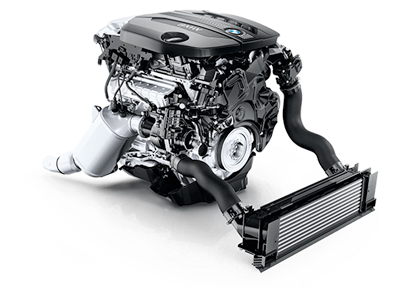Checking Out the Advancement of Burning Engines in Modern Transport Equipments
As we navigate the landscape of modern transport, the advancement of combustion engines stands as a testimony to human resourcefulness and engineering expertise. The interplay of history, modern technology, and environmental concerns in forming the trajectory of combustion engines creates a story that is both compelling and informative.
Early Beginnings of Combustion Engines
Just how did the principle of combustion engines initial emerge in the very early stages of transport advancement? The roots of burning engines can be traced back to the 17th century when the concepts of internal combustion were initial discovered. In 1673, Christian Huygens conceived a basic inner combustion engine that utilized gunpowder to generate power. It had not been up until the late 19th century that sensible applications of combustion engines in transport started to emerge.
The breakthrough moment featured the innovation of the initial successful gasoline-powered engine by Karl Benz in 1885 - bmw engine. This engine led the way for the advancement of the contemporary auto, transforming transport systems worldwide. Succeeding developments by Nikolaus Otto and Gottlieb Daimler additionally improved combustion engine technology, causing the automation of cars and the quick development of the transportation industry
These early combustion engines were defined by their simplicity and efficiency, laying the foundation for the complex and powerful engines used in modern transport systems. The advancement of burning engines has been instrumental in shaping the way we take a trip and move items, noting a considerable turning point in the history of transportation growth.
Transition to Internal Burning Innovation
The shift to internal burning modern technology noted a critical shift in the advancement of transport systems. This change began in the late 19th century, with creators like Nikolaus Otto and Gottlieb Daimler developing the very first successful inner burning engines. These engines transformed transport by using a much more effective and effective alternative to vapor engines and electric motors.
Among the crucial advantages of inner combustion engines was their capacity to be scaled down to match cars, leading to the growth of vehicles and bikes. This change from bulky, fixed engines to compact, mobile ones led the way for the modern-day transport systems we see today.
The change to interior combustion modern technology also stimulated developments in gas modern technology, resulting in the growth of gas and diesel as key fuel resources for vehicles. This shift not just made transportation a lot more accessible to the masses but additionally laid the foundation for the oil and gas market to come to be essential to international economies.
Effect of Combustion Engines on Transportation
The adoption of burning engines in transportation systems militarized a profound shift in the performance and speed of global wheelchair. Burning engines transformed transportation by giving a functional and dependable source of power for different lorries, including automobiles, ships, aircrafts, and vehicles. More hints This development substantially boosted the ability for goods and people to conform cross countries in shorter time frameworks, causing raised connection in between areas and countries.
Moreover, the widespread use combustion engines has actually had a substantial influence on economic advancement. The capability to move items effectively has spurred trade and commerce, permitting organizations to increase their markets and get to consumers worldwide. This has facilitated economic growth and globalization, as products can currently be transported much faster and in bigger quantities than in the past.
However, the ecological influence of burning engines can not be ignored. The combustion of nonrenewable fuel sources has actually resulted in air contamination and greenhouse gas discharges, adding to environment change and presenting health and wellness threats to populations. bmw engine. Therefore, there is a growing emphasis on creating alternate propulsion modern technologies to reduce these negative effects and create an extra lasting future for transport
Advancements in Burning Engine Design
One remarkable technology is the growth of turbocharged engines, which make use of exhaust gases to drive a generator that presses incoming air, allowing for more fuel to be charred, resulting in enhanced power output without a significant rise in engine article dimension. Variable valve timing systems have also revolutionized engine layout by maximizing air flow at various engine speeds, improving both power and efficiency. These advancements collectively contribute to the continual improvement of burning engines in modern-day transportation systems.
Future Patterns in Combustion Engine Growth
With technology improvements driving continuous advancement, the future of burning engine development is positioned to revolutionize transportation systems internationally. One of the crucial fads in combustion engine advancement is the press towards higher performance and decreased exhausts.
An additional prominent pattern is the fostering of crossbreed technologies in combustion engines. Hybrid engines combine standard burning technology with electric power, providing enhanced gas performance and lower emissions. As the vehicle sector changes in the direction of electrification, hybrid combustion engines are seen as a transitional option that connects the void in between conventional cars and completely electric ones.
Furthermore, the combination of clever modern technologies, such as expert system and data analytics, is expected to play a significant role in the future of combustion engine advancement. These innovations can maximize engine efficiency in real-time, causing extra reliable burning procedures and improved general automobile efficiency. Accepting these future patterns will not only drive development in combustion engine development but additionally add to an extra environmentally friendly and lasting transport ecological community.

Verdict
In conclusion, the advancement of burning engines in contemporary transportation systems has actually been marked by significant advancements in modern technology and style. From the early starts of combustion engines to the change to internal combustion innovation, these engines have actually had an extensive influence on transportation.
The origins of combustion engines can be mapped back to the 17th century important link when the principles of inner combustion were first explored. These engines transformed transport by supplying an extra powerful and reliable choice to steam engines and electrical motors.
